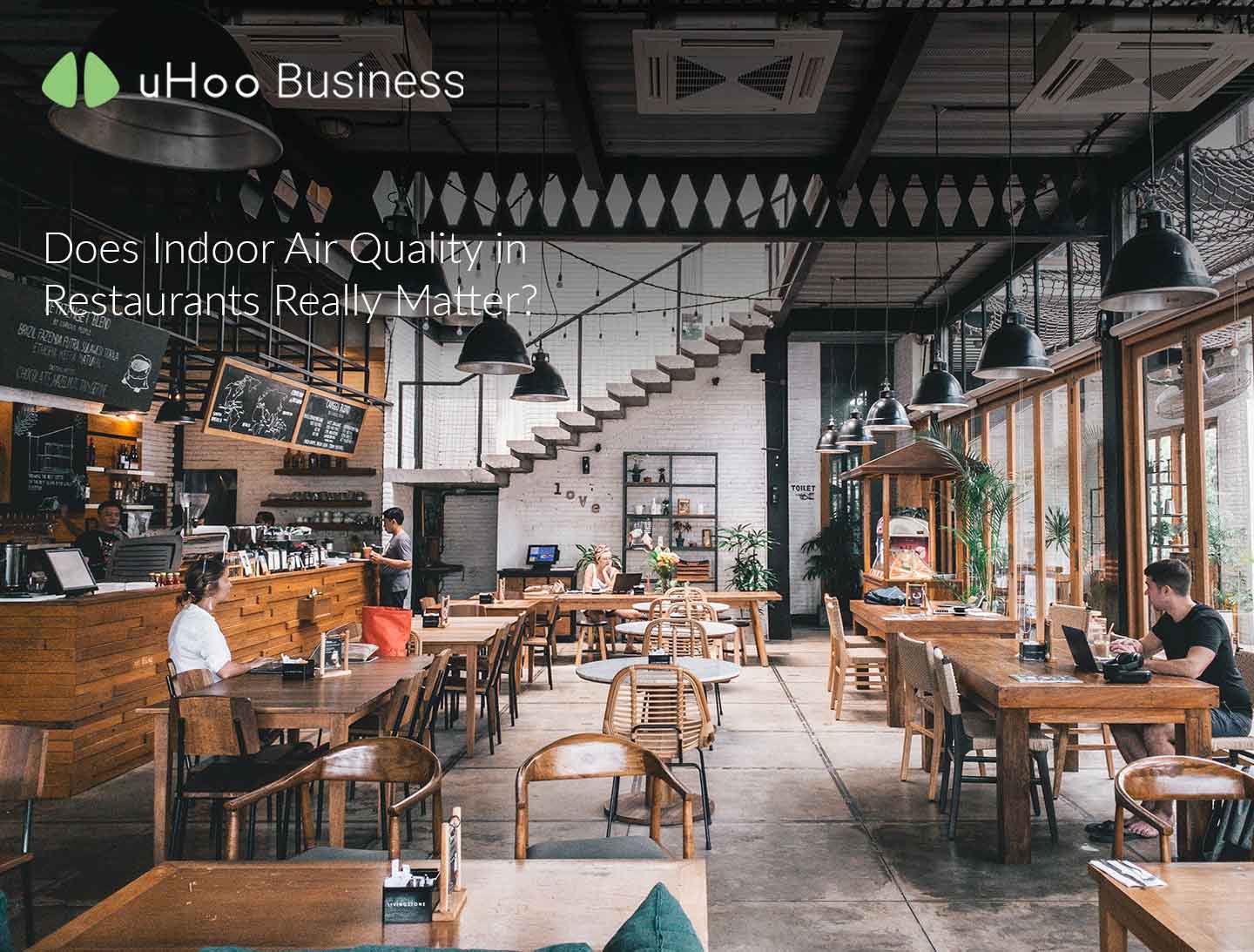
The pandemic has been extremely hard on just about every business, be it large or small, and one of those businesses that have suffered greatly are restaurants.
Some have successfully transitioned to take-out and delivery, but the challenge to make the workplace healthy and virus-free to protect the health of employees placed an enormous pressure on busainess owners and building landlords.
Today, as restrictions gradually loosen and most restaurants worldwide can now legally resume their operations, many customers are still hesitant to visit and dine-in.
Considering both situations, it is critical for restaurants post-pandemic to employ stricter safety precautions to put customers and employees at ease. Aside from mask wearing, temperature scanning, social distancing and vaccination protocols, these extra measures should include monitoring and improving indoor air quality.
Indoor air quality in restaurants
Complying to sanitation mandates, although effective is not enough to completely efface virus threats and ensure safety. Risk shoots up when virus particles and other contaminants continue to float in the air and roam within the facility, so having the right knowledge about a restaurant’s indoor air quality will allow owners to become more equipped in preventing the infection as they begin to re-open.
Poor IAQ hotspots in restaurants
The following are known to be the worst air-polluted areas in a restaurant:
- Kitchen – most restaurant activities take place in the kitchen. Smoke from grills, stoves and ovens release emissions into the air like particles, formaldehyde, carbon dioxide and carbon monoxide that can make the air toxic.
- Coolers and refrigeration units – these areas produce excess moisture which can lead to mold and mildew production.
- HVAC system – heating, ventilation and air conditioning systems can also be accountable for poor indoor air quality in restaurants. Faulty HVAC units promote poor air flow which could increase the risk of virus survival.
- Dining Area – the number of people and the activities that occur in a restaurant’s dining area produce high levels of carbon dioxide, unbalanced temperature and moisture. The cleaning materials, furniture and paints used in the facility can produce volatile organic compounds and particles that when inhaled, may harm health.
Impacts of indoor air quality in restaurants
- Food storage – keeping food products in its best condition requires meticulous hygienic conditions and sometimes, specific cooling mechanisms. When indoor air quality especially the temperature and humidity is unbalanced, mold and bacteria can accumulate which can lead to food spoilage and contamination.
- Sense of taste and smell – Long-term exposure to harsh odors and PM2.5 may put a person’s sense of smell at risk and experience a condition called anosmia. Moreover, a poor sense of smell also affects a person’s ability to taste — which means that they would likely consider stronger tasting foods, which are often fatty and salty.
- Customer comfort and satisfaction – aside from offering appetizing meals, maintaining good indoor air quality is another way to keep customers happy and satisfied. Unwanted odors and facilities that are too hot or cold can make a customer’s dining experience unpleasant. Additionally, dust and allergens floating in the air can aggravate the condition of diners with existing health issues.
Discomforts can lead to complaints and bad reviews which can damage the business’ reputation.
- Employee work performance – employees who are exposed to bad IAQ are at great risk of experiencing short-term and long-term health problems. Short-term effects include Sick Building Syndrome with symptoms such as eye and nose irritation, coughing and headache – which subsides when the employee is no longer at work while long-term health problems include bronchitis, colds, increased aging of the lungs and cancer.
Both short-term and long-term problems caused by unmanaged indoor air quality in restaurants can result in frequent absences, poor work performance and reduced productivity.
How to improve indoor air quality in restaurants
Restrictions have been lifted, restaurants can open again, but for it to prosper, customers need to show up. Here are some effective indoor air quality tips that would help restaurants encourage diners to sit down for a meal:
- Conduct HVAC system inspections, maintenance and change air filters regularly to prevent the growth of mold and bacteria.
- Improve ventilation. Cooking creates high levels of humidity through smoke and steam, by letting the bad air out and the fresh air in, unpleasant odors and harmful gasses can be eliminated.
- Conduct regular dusting and vacuuming to remove fine particles.
- Redesign the kitchen with ergonomics in mind. This promotes efficiency, comfort, productivity and can contribute to better indoor air.
- Choose cleaning and sanitizing products that are free from volatile chemicals.
- Use indoor air quality sensors. uHoo Aura provides real-time indoor air quality data that restaurant owners and managers can use in optimizing the dining facility. Equipped with sensors for temperature, humidity, carbon dioxide, particulate matter, nitrogen dioxide, air pressure, VOCs and more, uHoo Aura can provide insights, trends and analytics that are useful in creating strategies on how to improve indoor air quality in restaurants and create an environment that’s healthy and virus-free.
Just like anyone, employees and diners are rightfully concerned about the facilities they would visit and go back to. By learning how to improve indoor air quality in restaurants, you can save your customers from health consequences, improve employee productivity and ensure a good brand reputation, all at the same time.
References:
- https://www.forrestanderson.net/post/improving-indoor-air-quality-in-your-restaurant
- https://www.cnet.com/health/how-to-improve-indoor-air-quality/
- https://iaqscience.lbl.gov/perceived-iaq-and-work-performance
- https://pubmed.ncbi.nlm.nih.gov/15330777/
- https://www.metmann.com/en/n127_Air-quality-in-the-food-industry-a-challenge-for-producers
- https://www.achrnews.com/articles/144323-restaurant-owners-hang-hopes-on-iaq-solutions
- https://www.usnews.com/news/health-news/articles/2021-06-01/smog-might-damage-your-sense-of-smell#:~:text=The%20investigators%20found%20that%20long,foods%20and%20detect%20harmful%20odors
- https://www.independent.ie/irish-news/health/pollution-is-killing-our-sense-of-smell-and-its-making-us-fatter-35475052.html




